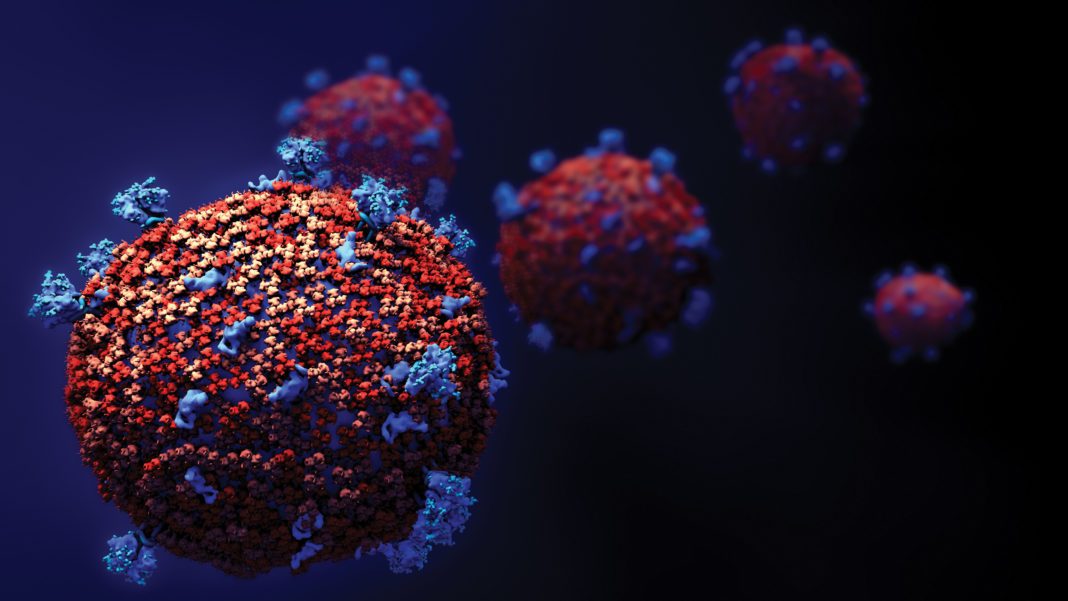Two research teams have published back-to-back papers in Science Immunology suggesting that a class of chemical compounds, diaminobenzimidazoles (diABZIs), treated SARS-CoV-2 infection and prevented severe disease in mice and in vitro human cells. Both studies support the use of diABZIs as promising COVID-19 therapies to mobilize defense and block viral replication once it enters the body. The authors say that diABZIs offer several advantages over similar drugs, including cost, enhanced stability, room temperature storage, and potential for efficacy even at low dose treatments.
Together with his colleagues, Minghua Li, PhD, a post-doc in Sara Cherry’s lab in the department of pathology and laboratory medicine at the University of Pennsylvania, demonstrated in human respiratory cell culture experiments that SARS-CoV-2 “hides” from the immune system. More specifically, the virus evades the activation of interferons (IFN), inflammatory proteins that inhibit viral replication. These findings are published in the paper, “Pharmacological activation of STING blocks SARS-CoV-2 infection.”
By evading IFN activation, SARS-CoV-2 delayed the response of bystander immune cells, leading the authors to hypothesize that targeting immune pathways involved in IFN activation could help control SARS-CoV-2 infection. They screened a panel of 75 microbial ligands to search for potent antiviral innate immune players, finding that molecules that activate STING—a key stimulator of IFN genes—were strongly antiviral.
They tested one type of diABZI, a potent STING activator, in in vitro human cell experiments and two different mouse models of SARS-CoV-2 infection. Across models and experiments, the molecule potently inhibited SARS-CoV-2 infection—including those caused by diverse strains and variants—by transiently stimulating IFN signaling. RNA sequencing of immune cells in mouse lungs also revealed rapid activation of IFN signaling pathways after a single intranasal administration of diABZI. The researchers also discovered striking overlap between orthologs of genes induced by diABZI in human respiratory epithelial cells and mouse lungs, suggesting promise for the drug’s clinical translation from mouse to human.
In the second paper, Fiachra Humphries, PhD, a post-doc in the lab of Kate Fitzgerald in the program in innate immunity, department of medicine, University of Massachusetts Medical School, in collaboration with GlaxoSmithKline, tested a variation of the same compound, called diABZI-4, in a transgenic mouse model of SARS-CoV-2 infection. The molecule was highly effective in limiting viral replication in lung epithelial cells, the primary targets of the virus.
This work is published in the paper, “A novel diamidobenzimidazole STING agonist protects against SARS-CoV-2 infection.”
STING activation was rapid and short lived, but enough to inhibit viral replication by inducing transient production of inflammatory molecules and lung immune cell activation. Administration of diABZI-4 intranasally before and after virus infection protected mice from severe respiratory disease.
In future work, researchers from both groups seek to determine the appropriate dose and delivery method for diABZIs in humans, and whether the lung-targeted therapy could also be used to treat other respiratory pathogens, such as influenza.







